The Legendary Mannlicher
While the Mauser Model 1898 rifle is the reigning king of all big game firearms, if there were any contender for the title it would be the Mannlicher. Although he made a truly original straight pull action in 1884 that was quite successful, Ferdinand Mannlicher's most famous military and sporting rifles evolved from the German Model 1888 Commission Rifle (itself a derivative of the Dreyse and Chassepot designs), conspicuous for its split rear bridge, and the Spandau Arsenal modified Mauser bolt action with a Mannlicher designed magazine using en bloc clips. Since the Commission had borrowed his magazine system, Mannlicher returned the favor and adopted the Mauser-derived bolt action. Beginning in the Model 1892 and 1893 (6.5 x 53R mm), the Mannlicher bolt action system was refined in the 1895 and 1896 (6.5 x 53R mm), the 1900 and 1903 (6.5 x 54 mm), 1905 (9 x 56 mm), 1908 (8 x 56 mm), 1910 (9.5 x 56 mm), 1924 (High Velocity and Sequoia long actions), 1930, 1950 (GK), 1952 (GK Improved), 1956 (MC), 1958 (magnum action) and 1961 (MCA) models. All of these save the earliest, the 1892/93 and 1895/96 models, belong in the Mannlicher-Schoenauer category, having the novel spool magazine designed by Otto Schoenauer.

Original Model 1892/93 Roumanian Mannlicher Sporting Rifle by an English Maker
The older designs are adapted from the 1893 Roumanian and 1895 Dutch military rifles, both of which were chambered for the 6.5 x 53R mm cartridge, a rimmed ancestor of the more recognized 6.5 x 54 mm Mannlicher-Schoenauer rimless cartridge that appeared in the 1900 model. Though it is almost forgotten today, at least half of the glory and exploits owned by the .256 Mannlicher, as it was known to the British, is attributable to the earlier rimmed (and ballistically identical) cartridge and rifle. In fact, it is often very difficult to tell which weapon is being depicted, unless a date can be applied to eliminate the later design.
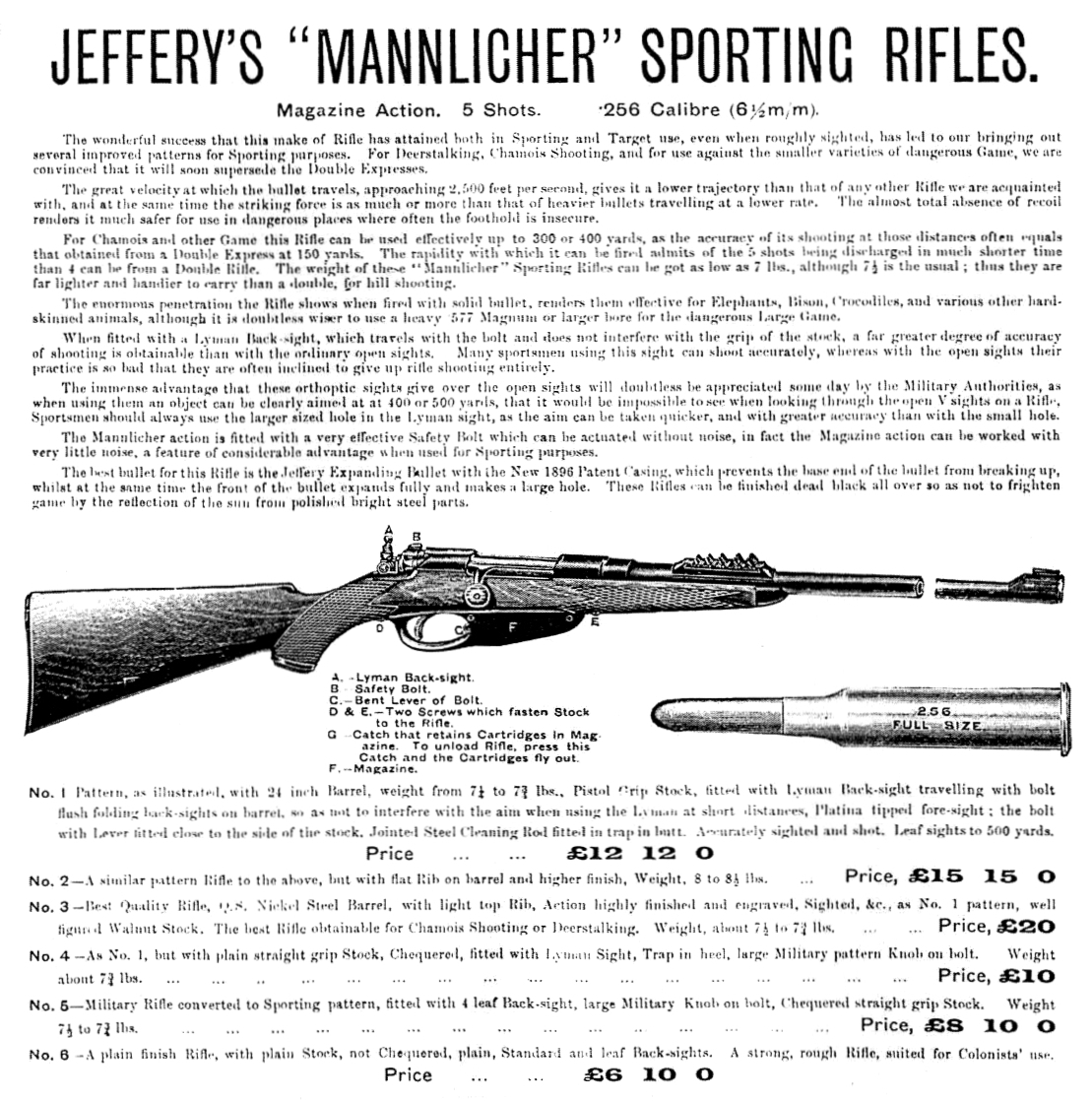
Advertisement for Model 1895 .256 Mannlicher Sporting Rifle by W. J. Jeffery & Co.
Most of the better English gunmakers proudly produced sporter versions of the Mannlicher and it was extremely popular. George Gibbs was probably the first to introduce it to British sportsmen. Driving a heavy and well made 160 grain bullet at a precipitous 2350 to 2450 fps in a standard length barrel, it offered very impressive performance for the day; in fact, from 1892 until the arrival of the Westley Richards .375/.303 Accelerated Express in 1906, it was the fastest cartridge in the world. That's probably the longest stretch of time that any cartridge has held that title, or ever will. It was the success of this load, as much as the redoubtable 7 x 57 mm Spanish Mauser, that influenced American ordnance designers to develop the Model 1903 and 1906 cartridges.

6.5 x 53R mm or .256 Mannlicher Military FMJ-RN Cartridge
Prominent users of the .256 Mannlicher rifle were Sir Edmund Loder, Sir Alfred Pease, John G. Millais, Maj. R. L. Kennion, P. H. G. Powell-Cotton, Maj. C. H. Stigand and Blayney Percival, all of whom evidently regarded the .256 Mannlicher as their favorite arm. Denis D. Lyell, Charles Sheldon, Hesketh K. H. Prichard, Capt. H. A. Wilson and the adventurer and big game hunter Denys Finch-Hatton (remembered mainly as the lover of Danish author Isak Dinesen, who wrote Out of Africa), also used the .256 Mannlicher or the Mannlicher-Schoenauer version. Pease and others used the little cartridge to slay lions, rhinos and elephants with dispatch (mainly owing to their unusual steadiness and shooting abilities). Those who used it praised the Mannlicher's reliability, smoothness of function, effectiveness and handiness in the field - a legendary legacy that endures.
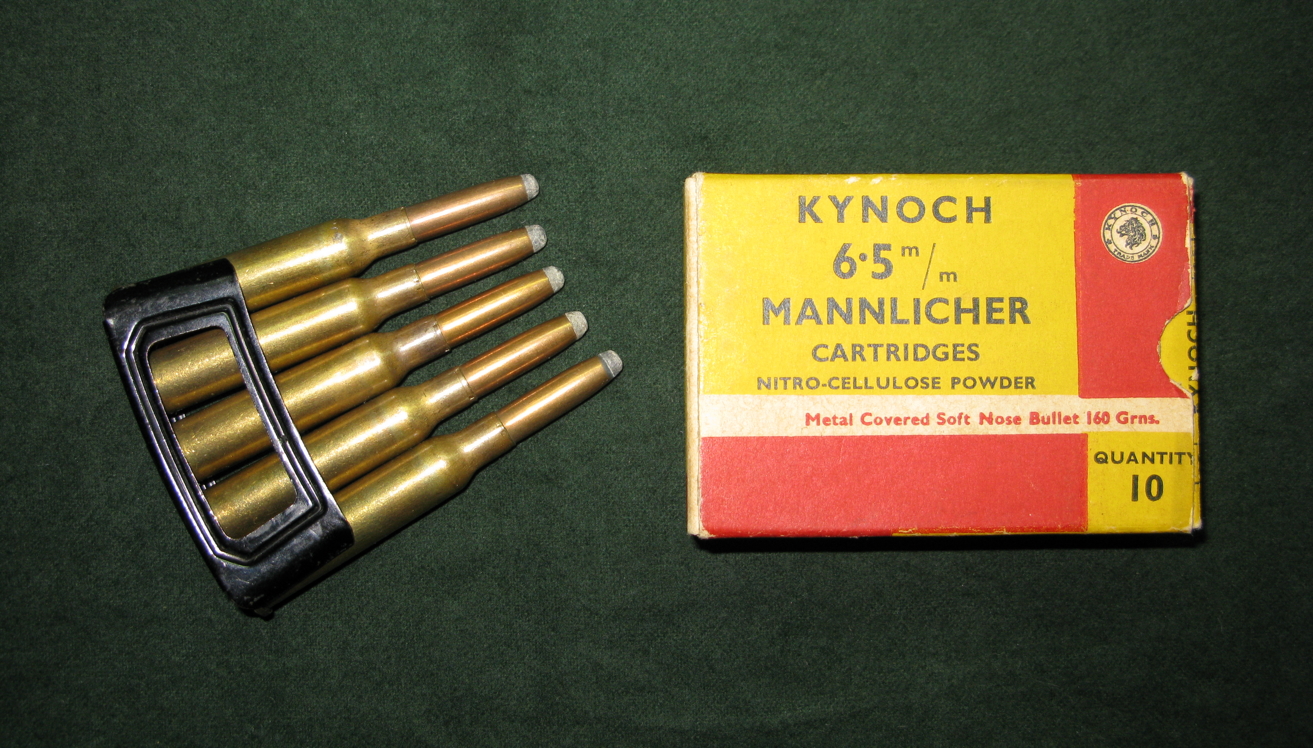
Original Kynoch 6.5 x 53R mm or .256 Mannlicher Cartridges in En Bloc Clip
Finding the Rifle
While Dutch carbines turn up from time to time on the online auctions, full length Dutch Mannlicher rifles are quite rare, and the only Roumanian pattern Mannlicher carbine or rifle that I have ever seen is in the Ordnance Museum at Aberdeen Proving Ground, MD. So I was extraordinarily fortunate to obtain an 1895 Model Dutch Mannlicher rifle in good condition (very little spotting or pitting). This rifle was produced at the Hembrug Arsenal under license from Steyr Werke AG for the Netherlands military in 1918. It had since been sporterized in a most unsatisfactory manner by unskilled hands, but somewhere along the way it had acquired the now almost impossible to obtain Lyman Model 36 swing away aperture sight. For the price that I paid the Lyman sight alone would have been worth it.
One of the peculiarities of this rifle design is that it must be operated with a spring steel clip magazine, containing five cartridges. This is inserted through the top of the action until it locks. A follower with a strong spring presses on the cartridges and keeps them tight against the lips of the clip. When the last cartridge is chambered, the clip drops free. Its a neat design. The clip can be inserted either way, unlike other clip designs, such as the 1895 straight pull Austrian and Hungarian Mannlichers. The drawback is that if you lose all of your clips the rifle becomes a single shot. However, these are not hard to come by and generally are not expensive since the rifles are so scarce. I managed to get five with no difficulty.
This feature makes identification of the Models 1892/93 and 1895/96 fairly simple. Look for a bolt and receiver like a Model 1888 Commission rifle (split rear receiver bridge) and a rigid magazine well extending below the receiver and conjoined with the trigger guard assembly. If those features are present, then you have an 1893 or 1895 Mannlicher. If you have the Model 88 bolt / receiver with a spool magazine, then that is a Mannlicher-Schoenauer. If you have an extended clip magazine and a straight pull bolt, then that is one of the several patterns of straight pull Mannlichers (usually Model 1895 - no shortage of confusion with two distinct Model 1895 Mannlicher designs!). If you have the Model 88 bolt / receiver and a conventional enclosed box magazine, then it is a Model 88, produced by Mauser, Steyr, Haenel or others.
Building the Rifle
The first thing that had to be done was to replace the stock. Someone, lacking either mechanical aptitude or aesthetic sensibility, modified the original military stock in a most abominable fashion. I wish I had a good photograph. It was truly hideous. Pieces of bird's eye maple had been glued onto the spine of the buttstock, with liberal amounts of putty applied to fill in the gaps where skill failed to join the pieces of wood seamlessly or where gouging had occurred. The curve of the grip and trigger guard no longer matched even crudely. No effort had been made to modify the military forearm, other than to add a black plastic tip. It had a definite 1960s or early 1970s tackiness about it (white line spacers, the whole nine yards).
Possibly worse, the barrel had been sawed off and crowned (I dare not guess how) such that it was not square. Although I never shot the rifle in this condition, I can only assume that a muzzle that was not true did not contribute to good accuracy. Fortunately, at least 24 inches of barrel remained and re-cutting and crowning a barrel is not difficult.
I placed order with Great American Gunstock Co. for a high grade English walnut stock in the Freischutz pattern, which is a very traditional European style with a pancake cheekpiece and considerable drop at the heel. I specified a long pull (over 14 inches), since prior experience with a Mannlicher-Schoenauer showed that to be correct and I knew that most English stalking rifles also had pulls in the 14-1/2 inch range.

1895 Mannlicher Stock Blank from Great American Gunstock Co.
My brother is a talented amateur gunsmith and has built several Mausers, in addition to rebuilding other guns including antique shotsguns and a Ruger No. 1 to look more like an orginal English Farquharson. He was chomping at the bit to get his hands on my Mannlicher and I was only too happy to oblige his craftsman's urge.
The first thing that my brother did was convince me not to replace the military bolt handle with a sporter butterknife style. He also bent the bolt over. You see all three types of bolts on vintage .256s, but truly the most commonly encountered is the bent over military bolt. It looks right on this rifle and it lends a definite suggestion of British origins to it (only an Austrian sporter would likely have a butterknife bolt handle, until you get to the later Schoenauers converted by Jeffery and others).
I specified a rear island sight with one standing and a single folding leaf, but the standing leaf must not be so tall that the Lyman aperture sight was obscured, since that was intended to be the primary sight. Our experience with an aperture sight in practical shooting (especially standing) showed that it conferred a marked increase in the effective range of shooting and came on line much more quickly than plain or express sights. Nevertheless, I liked the aesthetic of the express sights and requested the island rear.
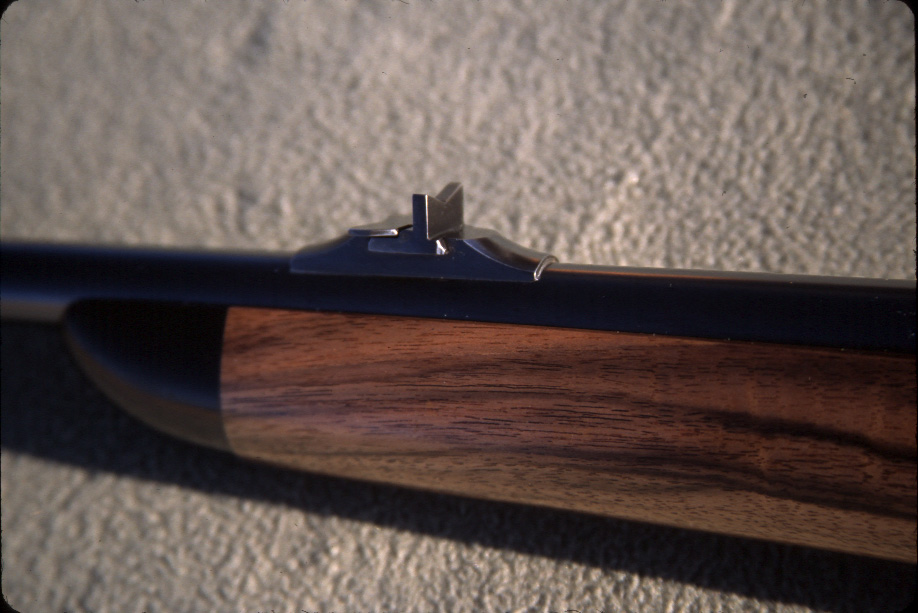
Rear sight detail showing fixed standing blade and one leaf on island
The front sight was a New England Custom Guns (NECG) Masterpeice banded ramp sight, the one you see on practically every custom rifle made today. It is very sharp looking and has a variety of bead inserts. I selected the fine silver bead with flip up night sight. The latter is a much larger paddle shaped bead that is hinged to the front of the bead insert. In low light it can be flipped up into place, providing a much coarser but far more visible front sight.
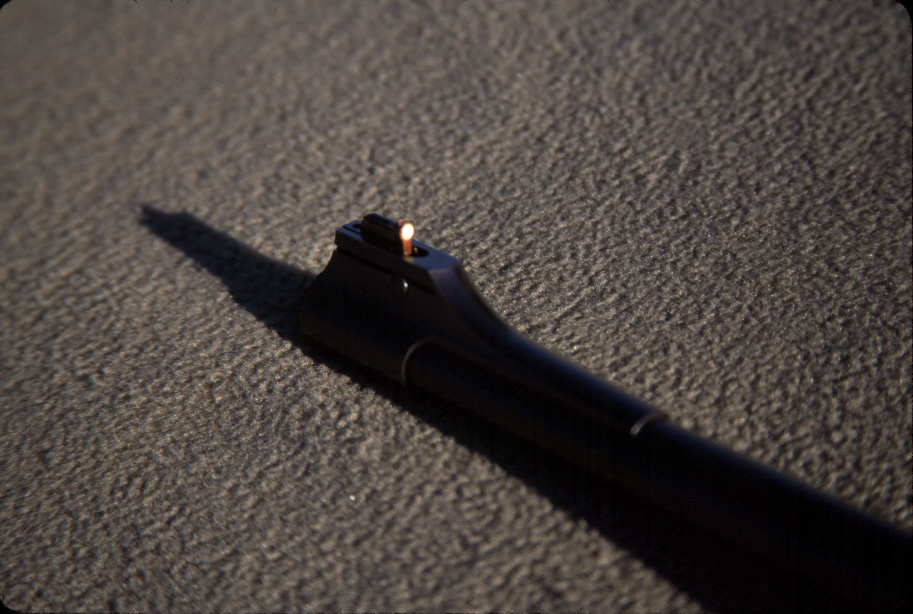
Front sight detail of flip-up night sight
I wanted a barrel band swivel and European style rear swivel (naturally), ebony fore-end tip, Dressels steel grip cap, and steel butt plate (my favorite butt design - though, as my brother reminds me, they tend to prove treacherous when propping up a rifle). He also contributed some aesthetic details of his own: an inletted German silver shield in the butt for engraved initials, ebony crossbolt plugs and rich carving of a very slender and graceful stock with a classically British short forearm. We had a little trouble, owing to a misunderstanding with Great American Gunstocks on the pattern, but in the end my brother was able to make the stock I had wanted from the blank they provided and the wood is gorgeous (the figure near the bottom of the carved stock is one they cut, possibly for pattern making, that did not have high grade wood).
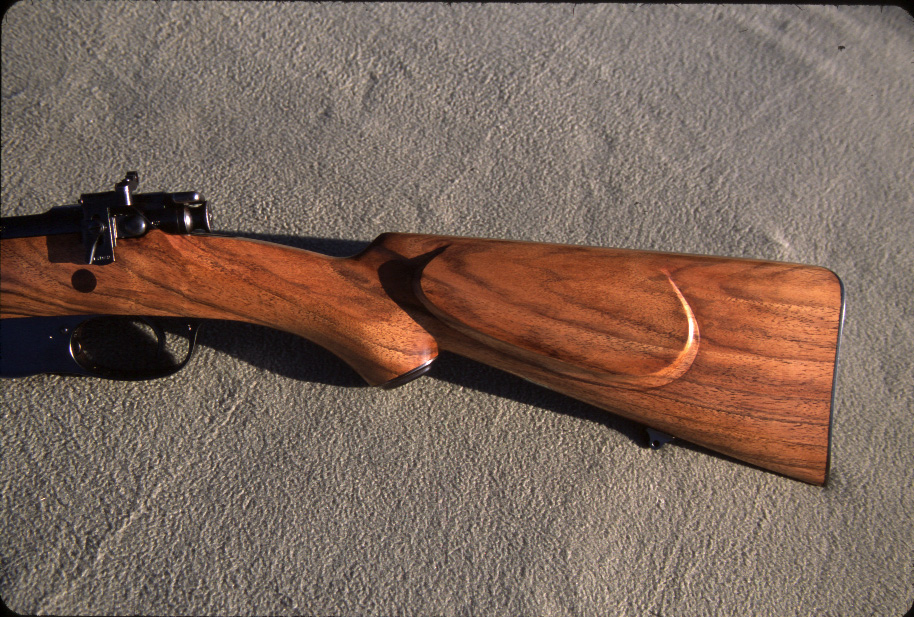
Butt stock detail showing grip cap, European swivel and inletted steel butt plate
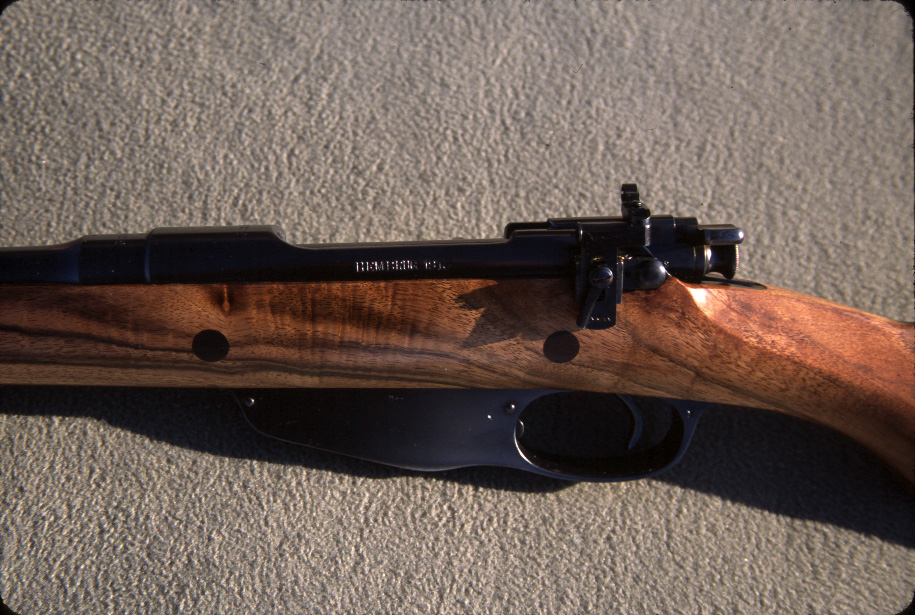
Left side detail showing cross-bolts and Lyman aperture sight on bolt release
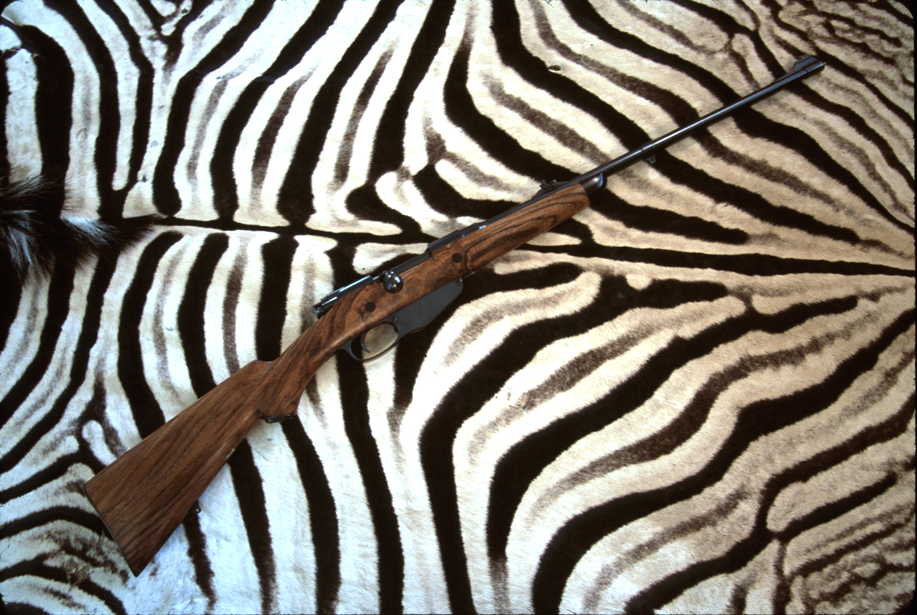
The fitted and finished stock for the .256 Mannlicher 1895 (right profile)
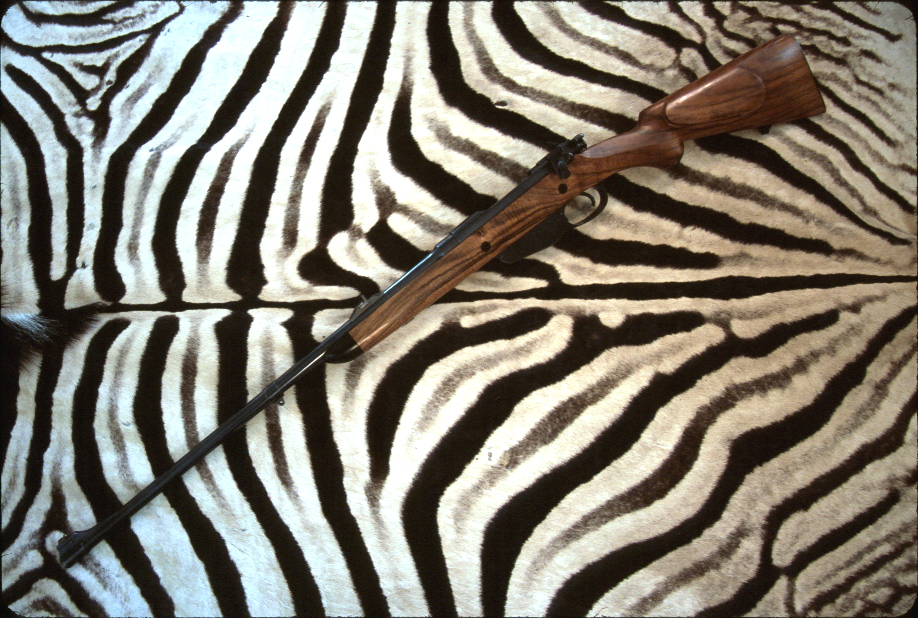
The fitted and finished stock for the .256 Mannlicher 1895 (left profile)
The checkering was performed by Tim Smith-Lyon (Classic Checkering), who does a very fine job. I got a custom panel pattern at 22 lpi that wraps the forearm and the side of the grip in a manner complementary of my brother's stock carving.

Closeup of the grip panel checkering by Tim Smith-Lyon
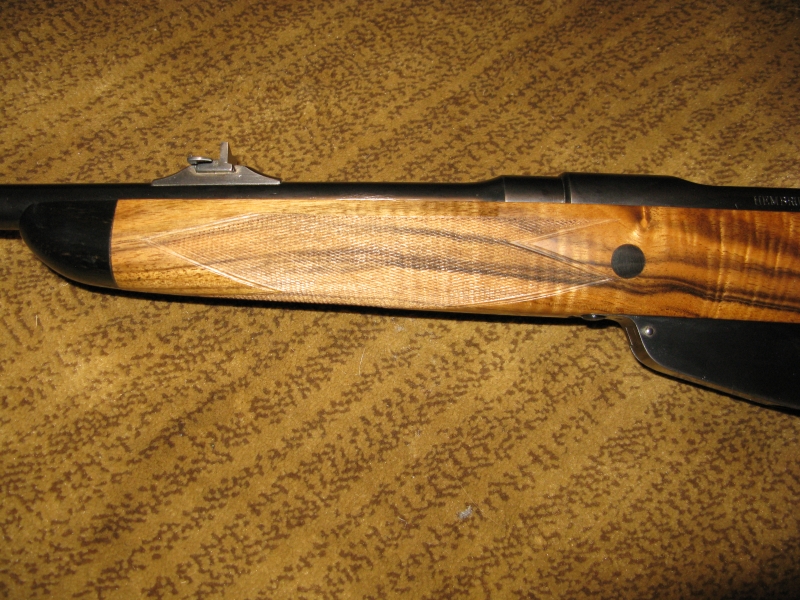
Closeup of the forearm panel checkering
This rifle is one of my most highly prized arms. I have never seen a vintage Mannlicher that looked this good. None of the originals that I have encountered sported anything but plain grained wood, nor did they have appointments and fittings of this quality (e.g., ebony plugs over the crossbolts) - and that includes the two Holland & Holland custom .400/.375 take-down Mannlicher-Schoenauers I have seen on auction. But this is much more than a beautiful rifle. It is a finely crafted sporting arm; rugged, reliable and capable of precision shooting in the game fields.
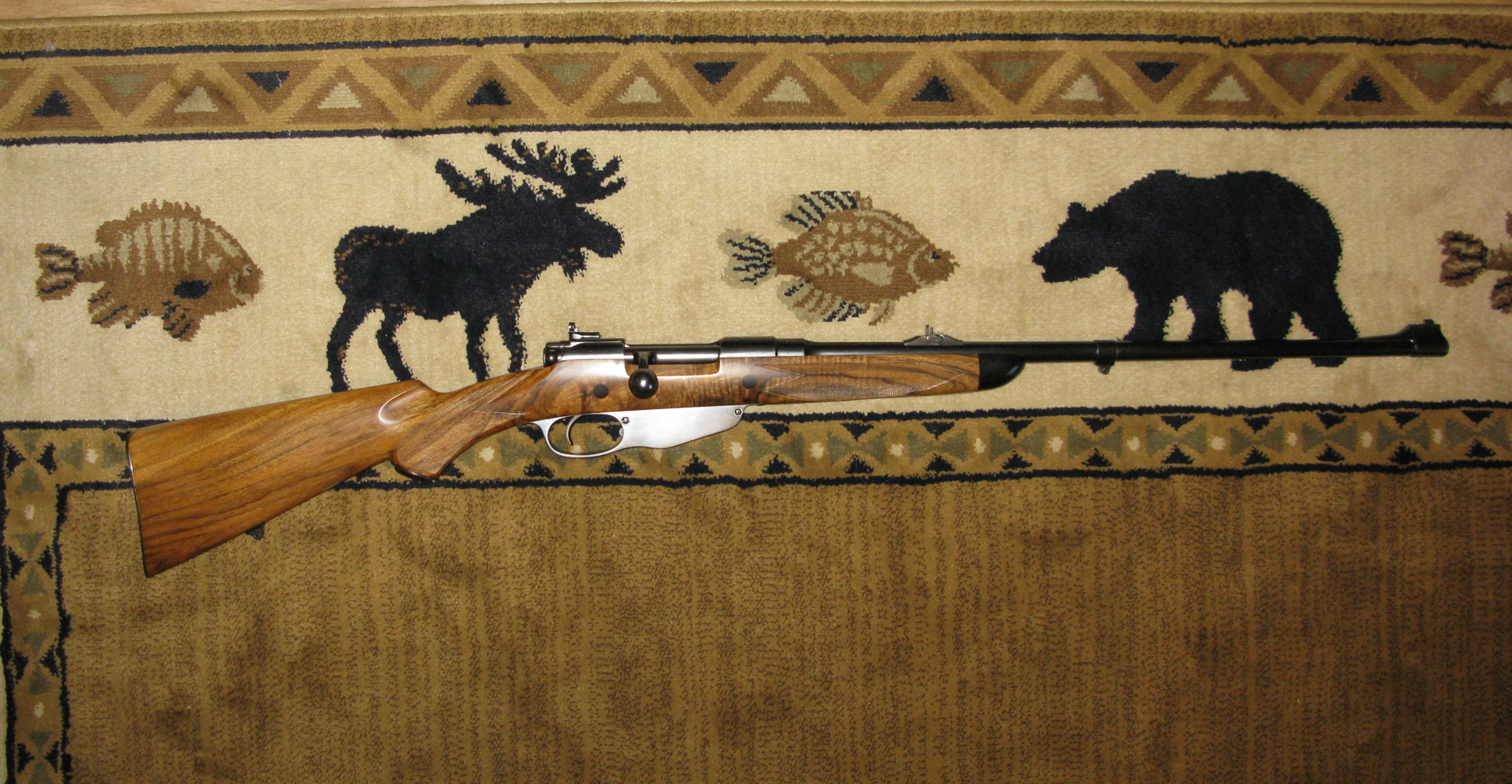
The fully restored .256 Mannlicher 1895
Load Development
For those interested, my working traditional load is 36 grains of Alliant Reloder-15 behind a Hornady 160 grain RN bullet for a muzzle velocity of ~2320 fps. Originally, I tried Hodgdon H-4831, based on some promising data in the Hornady manual for the 6.5 mm Mannlicher Schoenauer (ballistically identical), but that powder is just too slow in this tiny case, even with a 160 grain bullet. It also gave rather erratic velocities. Reloder-15 works great. The Hornady bullet is quite accurate, although the Sierra 160 grainer is even more accurate. I have not tested either of these yet for expansion. The photo below also shows the relatively new 160 grain Woodleigh Weldcore PP, which is alleged to expand down to 1900 fps. I have not done load development with these, but that would also make a fine bullet choice if it expands well at these velocities.
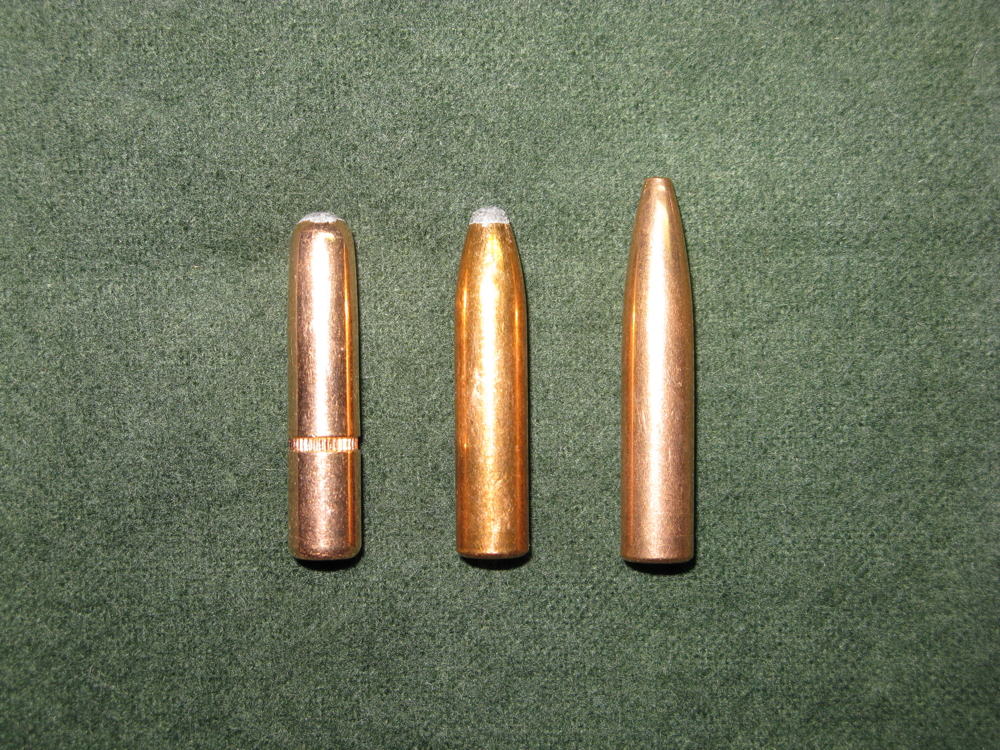
.264 Caliber Bullets: (L-R) 160 grain Hornady Interlock RN, 160 grain Sierra Pro-Hunter RN
and 160 grain Woodleigh Weldcore PP
If you examine the data for the 160 grain Hornady RN, you will see two loads for 36 grains of RL-15. The first is with the Hornady bullet seated to the cannelure. This load was warm, with the beginnings of primer edge flattening. I noticed that the military ball loads had a longer cartridge overall length (COL) than my handloads when seated to the cannelure, so the second 36 grain load is with the Hornady bullet seated out to the same COL as the military ball load. That eliminated any pressure signs and gave velocities that matched some vintage Kynoch ammunition (chronographed to ~2310 fps).
After looking at the Alliant reloading guide data for the 6.5 x 55 mm Swedish Mauser, I thought that I would give Reloder-22 a try, despite my disappointment with Hodgdon H-4831, which has a similar burn rate. Well, I guess the Ol' Swede has just enough additional case volume to really make the slower powder work, because I reached a maximum load before I even matched the velocities produced by Reloder-15. Arguably, something in between these two, on the order of IMR-4350 or H-4350 should be the ideal, but H-4350 proved to be only slightly better than the slower powders and not as good as Reloder-15. So, in my rifle at least, the best powder in this cartridge will be Reloder-15 or else Hodgdon Varget or IMR-4320, all of which have very similar burn rates.
The only trouble I ran into was with the Hawk bullet, which produced a frozen bolt and the only two instances of a pierced primer that I have ever experienced - on a very reduced starting load of 31 grains of RL-15. I wouldn't have fired the second shot except that I was incredulous that such a light load would produce such extremely high pressures. I thank God that I reduced it as much as I did. I can't definitely explain the cause, but the bullets miked to .265 caliber, so were .001 inch oversize. Ordinarily, that is not enough to matter, but this military barrel has a long leade and one theory is that the soft jackets "bumped up" in diameter before jamming in the rifling, which caused a pressure spike (harder gilding metal jackets did not). Another possibility is that the combination of an oversized bullet and very tight case necks resulted in the high pressures. Oddly, the velocities were consistent with previous loads with that charge (~2072 fps), which just serves to demonstrate that extremely dangerous conditions can arise a long way from normal velocities.
Possibly the best bullet for this wonderful old cartridge is Hornady's 129 grain Interlock spire point. This weight is close to the 135 grain load that appeared in the early 20th Century after it was discovered that velocities over 2500 fps produced spectacular instantaneous kills on occasion and everyone wanted more speed. It's actually a decent bullet weight, both in absolute terms and sectional density (0.264). My best load, using IMR-4320, yielded a safe maximum in hot weather with a muzzle velocity over 2600 fps. That is treading close behind the 7mm-08 Remington and enables this rifle to be effective out well past 200 yards. It's a good bullet too, though very basic in construction. Like the 160 grainers, these I loaded out long (i.e., not to the cannelure), so take note of the cartridge overall length in the loading data.
Table of Load Development Testing
| Bullet | Charge | Muzzle Velocity | Notes |
| .264-129 gr Hornady Interlock SP | IMR-4320 | COL 2.975 inch | |
| 34 gr | 2321 fps | SD 6 fps | |
| 35 gr | 2415 fps | No pressure signs; SD 16 fps | |
| 36 gr | 2448 fps | Moderate; SD 6 fps | |
| 37 gr | 2520 fps | Moderate; SD 16 fps | |
| 38 gr | 2624 fps | Maximum; SD 3 fps | |
| Hodgdon H-4350 | COL 2.970 inch | ||
| 38 gr | 2433 fps | ||
| 39 gr | 2518 fps | SD 11 fps | |
| 40 gr | 2550 fps | Warm; SD 8 fps | |
| 41 gr | 2621 fps | HOT; Hornady max load is 41.5 gr; SD 5 fps; | |
| .264-160 gr Hornady Interlock RN | Alliant Reloder-15 | COL 2.917 inch (seated to cannelure) | |
| 34 gr | 2236 fps | SD 35 fps | |
| 35 gr | 2271 fps | SD 33 fps | |
| 36 gr | 2369 fps | SD 6 fps; Warm | |
| 36 gr | 2320 fps | COL 3.060 inch; SD 16 fps; Safe Maximum | |
| IMR-4320 | COL 3.060 inch | ||
| 33 gr | 2146 fps | SD 13 fps | |
| 34 gr | 2172 fps | SD 3 fps | |
| 35 gr | 2231 fps | SD 8 fps | |
| 36 gr | 2307 fps | Warm; SD 39 fps | |
| Hodgdon H-4350 | COL 3.060+ inch | ||
| 35 gr | 2073 fps | ||
| 36 gr | 2154 fps | SD 3 fps | |
| 37 gr | 2227 fps | SD 3 fps | |
| 38 gr | 2304 fps | Warm; SD 18 fps | |
| 39 gr | 2352 fps | HOT; SD 13 fps | |
| Hodgdon H-4831 | COL 2.917 inch (seated to cannelure) | ||
| 37 gr | 2089 fps | ||
| 38 gr | 2142 fps | SD 44 fps | |
| 39 gr | 2239 fps | SD 111 fps | |
| 40 gr | 2244 fps | SD 15 fps; Warm | |
| Alliant Reloder-22 | COL 3.075 inch | ||
| 40 gr | 2213 fps | ||
| 41 gr | 2264 fps | Recommended maximum - Warm; SD 8 fps | |
| 42 gr | 2321 fps | MAXIMUM - HOT; Max load in Norma data | |
| .264-160 gr Sierra Pro-Hunter RN | Alliant Reloder-15 | COL 3.010 inch | |
| 31 gr | 2073 fps | SD 20 fps | |
| 32 gr | 2106 fps | SD 3 fps | |
| 33 gr | 2140 fps | SD 3 fps | |
| 34 gr | 2234 fps | SD 16 fps | |
| 35 gr | 2272 fps | SD 1 fps | |
| .265-160 gr Hawk RT (0.030 inch) | Alliant Reloder-15 | COL 2.975 inch | |
| 31 gr | 2072 fps | DANGEROUS: Pierced primers & stuck bolt | |
Warning: Use this load data at your own risk. No liability is assumed for the use of this data in any other firearm. It appeared to be safe in the test rifle, but was not subjected to pressure testing. Note particularly the one load which is highlighted as an UNSAFE load. Exercise safe reloading practices. Starting loads should always be reduced by 10% from the maximum load.
Another Classic Mannlicher Reborn...
...And here are some photos of a second 1895 Model Mannlicher (also Hembrug Arsenal produced) rebuilt by my brother as a sporter. Metalwork included polishing out the superficial corrosion, bending over the bolt handle, removing the military sights and installing some high quality express sights and a barrel band swivel. In this case he retained the rather horrible 1960s-70s style stock, but refashioned it - rasping off Monte Carlo hump, carving a shadowline on the cheekpiece and flutes on the wrist and comb, reshaping the pistol grip, shortening the forearm and adding a real Ebony forearm tip, crossbolt, steel grip cap and new buttpad - to make it look truly classic. The wood doesn't even look the same. First, we have the photo of the rifle as I received it and then the rebuilt rifle, lacking only the checkering on the forearm.

Online Advertisement for Sporterized Military Dutch Mannlicher with Plain Walnut Stock
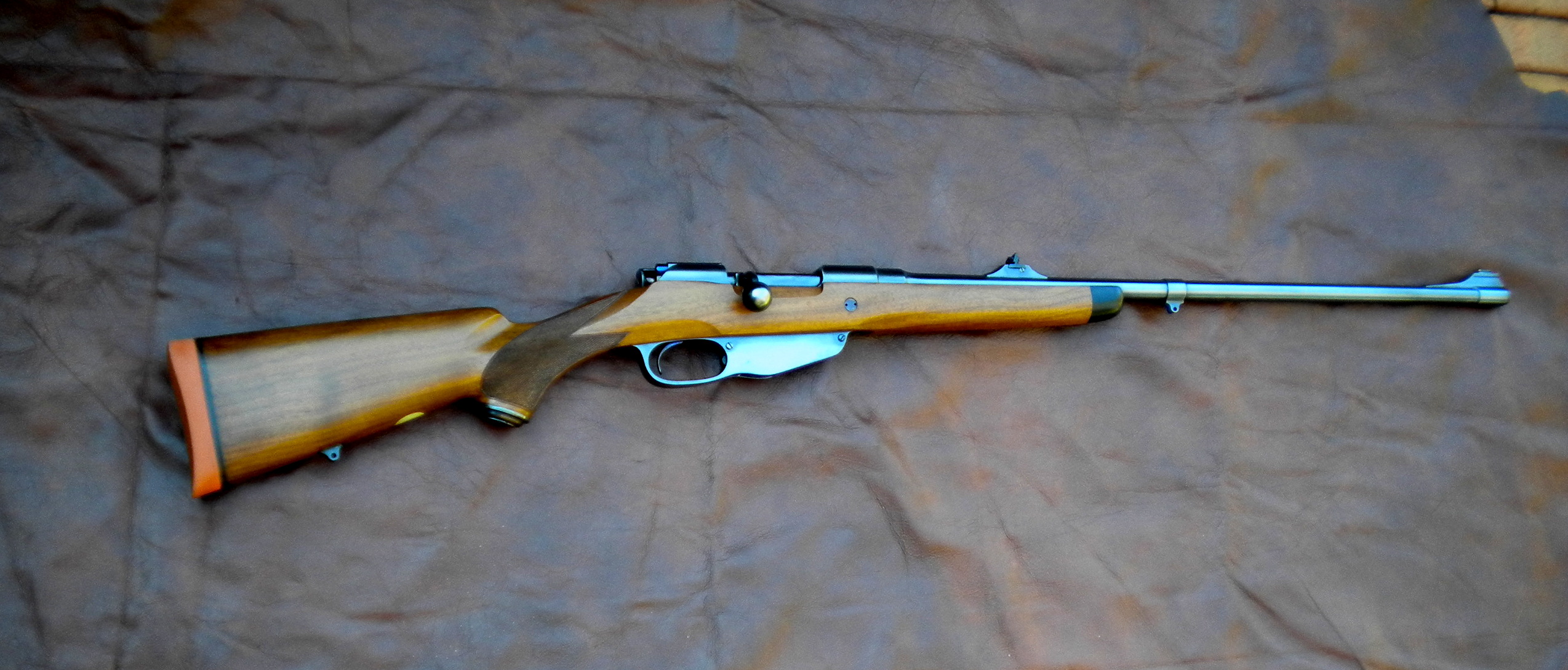
Right Profile of Rebuilt Mannlicher
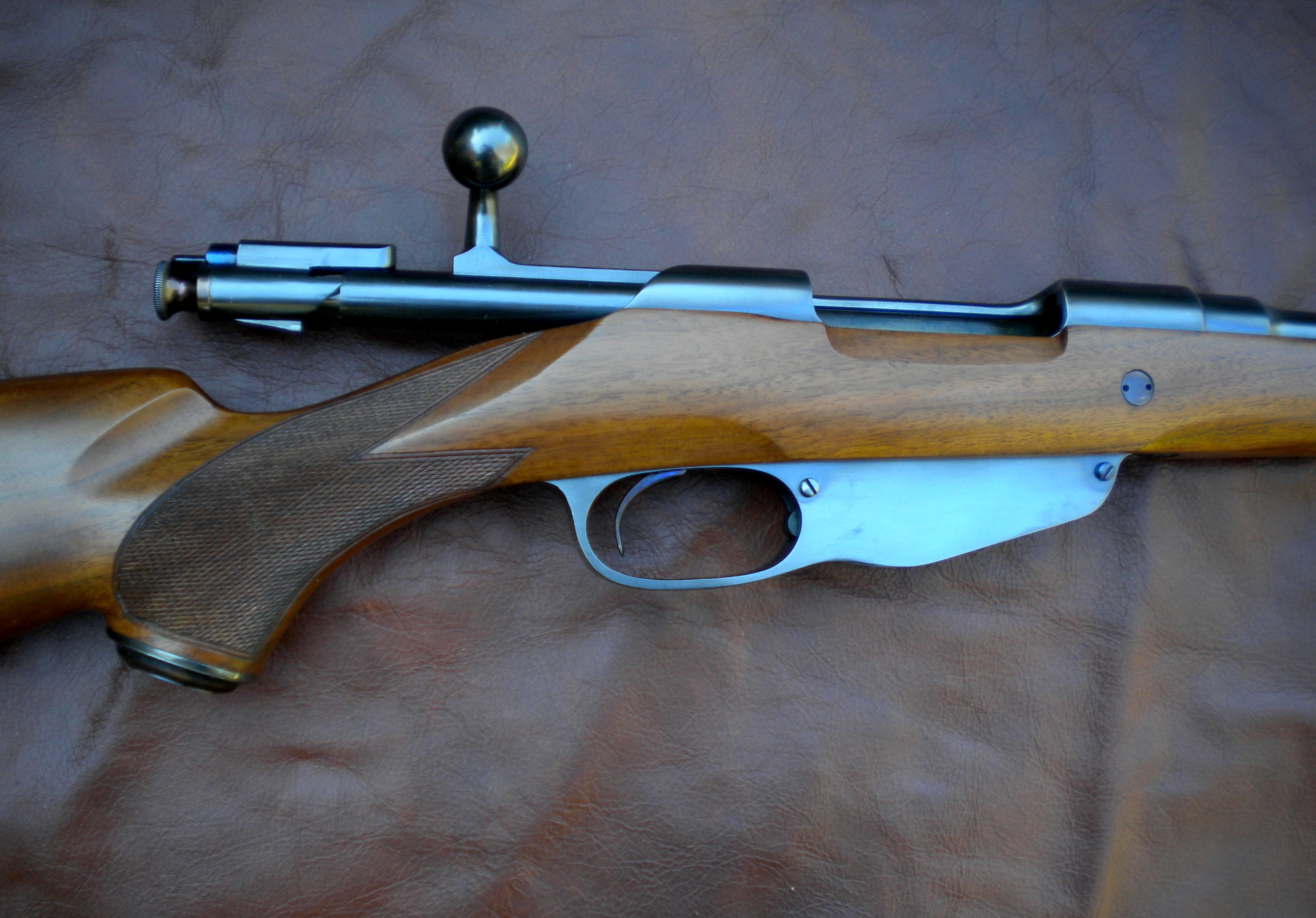
Right Closeup of Receiver, Crossbolt and Grip
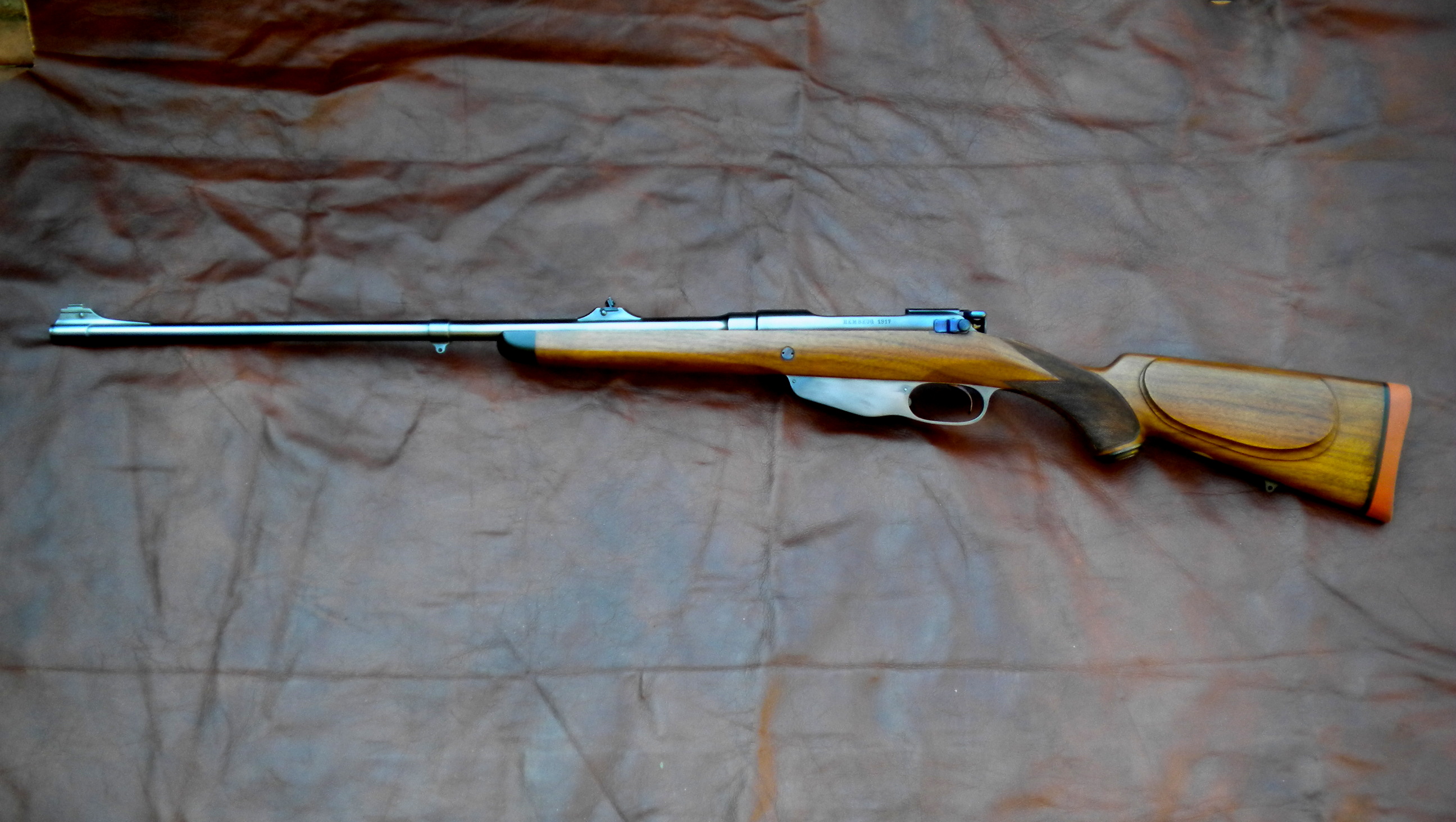
Left Profile of Rebuilt Mannlicher
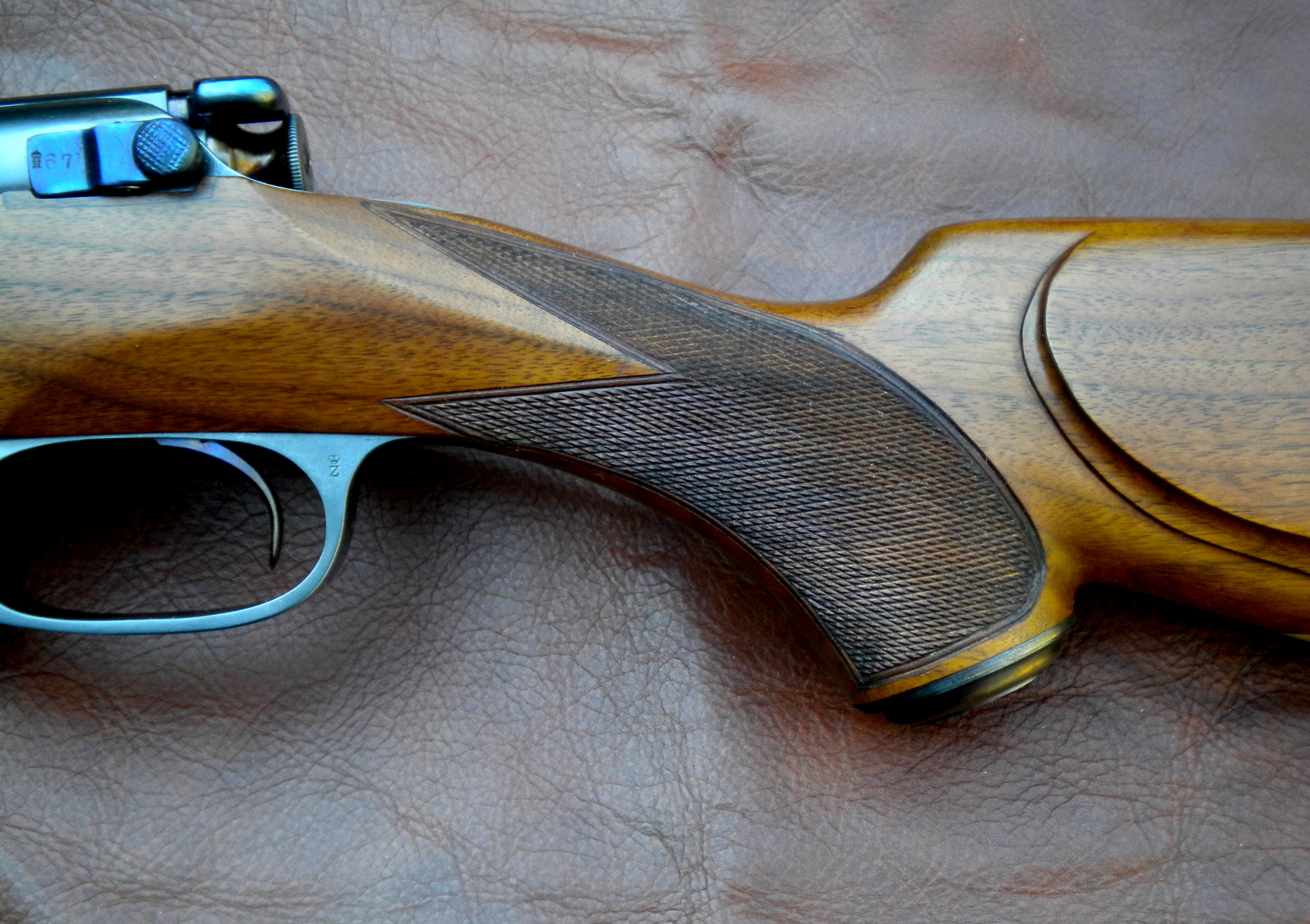
Closeup of Left Grip Panel Checkering
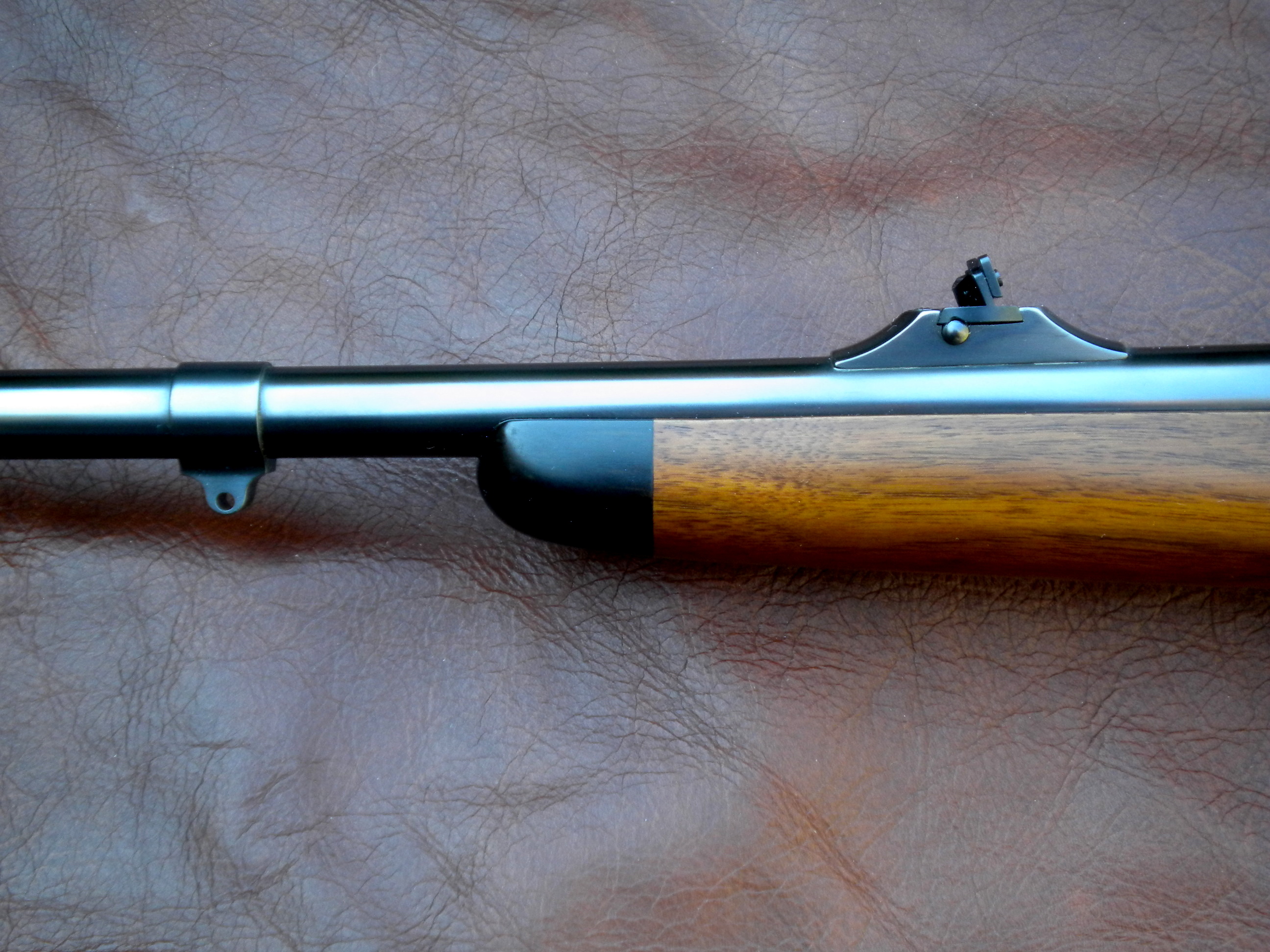
Closeup of Ebony Forearm Tip and Barrel Band Swivel
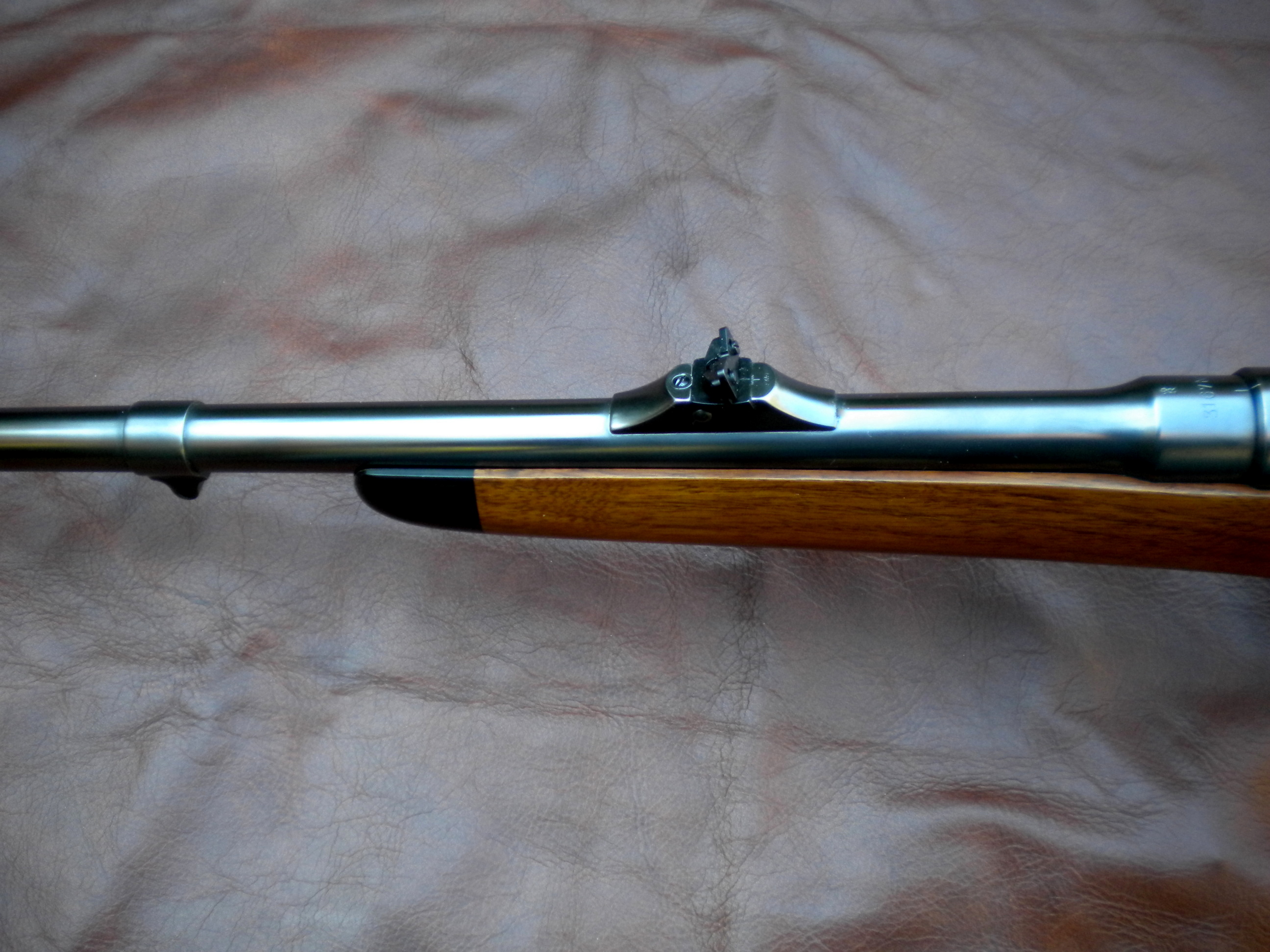
Closeup of Island Rear Sight
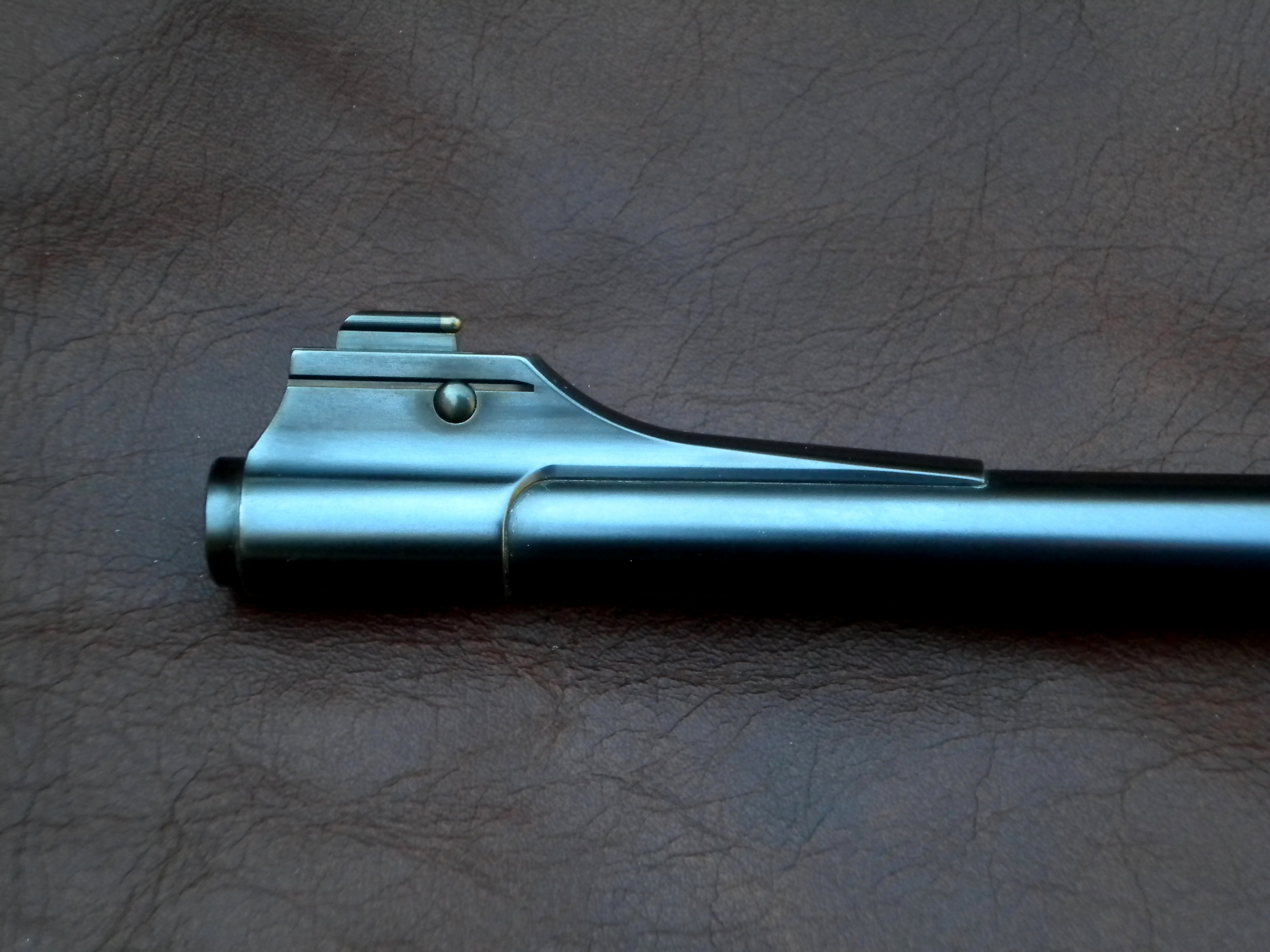
Closeup of Barrel Band Front Sight with Fine Silver Bead
Hunting & Field Notes
I encountered a couple of problems when I began hunting with the 1895 Mannlicher, in that I experienced problems with loading the en bloc clips into the magazine and also with feeding reliably.
My brother had taken some of my clips, cleaned them and then coated them with a black varnish. Unfortunately, these clips do not load into the magazine very well, if at all. I think the varnish causes friction, causing them to bind. The old clips with worn bluing feed perfectly. So, I stripped the varnish on those and performed a chemical blue treatment for rust proofing.
The other problem was failure to feed by the spire point loads from the magazine owing to the rim of the top cartridge sliping over the rim of the next in line. The cartridges also tended to tip downward into the magazine, rather than upward toward the breech. That, I finally realized, was because the rims on my Bertram brass were too thin and permitted the cases to wiggle in the clip. When I loaded some old Kynoch ammunition that I had, the cartridges were held firmly in the clip. The Bertram rims measured 0.059 inches, whereas the Kynoch hovered around 0.065 inches. Unfortunately, the Kynoch brass is Berdan primed, which is a problem for handloaders in places like the US where the Boxer system prevails. It can be done, of course, with the proper priming tools and primers. You may also be able to reform 6.5 x 53Rmm brass from .303 British brass and get a thicker rim, however the Winchester and Remington .303 brass that I had on hand measured roughly the same as the Bertram. I don't know if there is a make of .303 brass on the market with 0.065 inch rims, or any other case with comparable dimensions, although a host of older cartridges all rely in this case geometry or something very akin to it.
Owing to the feeding issues, I find that I can load no more than 2 or at most 3 rounds into the clip and still get acceptable reliability. You can still push the clip down a bit and single feed a cartridge into the chamber (making sure to let the bolt capture the rim - this is not a push feed!). That gives, perhaps, a 4 round loading, which is nearly the full complement.

Young Doe taken with the .256 Mannlicher using Hornady 129 grain SP
Classic Rifles, Pistols and Cartridges
Copyright 2006 - 2023 -- All Rights Reserved